Don’t Look Now is a film directed by Nicolas Hoeg.
The cover to the DVD of the movie introduced the plot as – “When a little girl is drowned, her parents go to Venice to forget. They meet a strange clairvoyant, who tells them their daughter is still very much alive and gives them ominous messages from the grave. As their whole world starts to disintegrate around them, everyday objects start to turn into omens of doom and ordinary events become terrifying glimpses into another dimension. The father begins a frantic search for his daughter, through the deserted canals and menacing alleys of Venice in winter, into a world where nobody can be sure of what is real and what is illusion – until the macabre, shattering climax.”
It was released in 1973 and classified in the horror genre. Having viewed the movie over 40 years after it was produced and having grown immune to grizzly murder scenes (I watch Game of Thrones), the horror aspect was not quite what I had been expecting. The murder scene is more a revelation that explained some of the earlier scenes, than it was a gruesome murder – even the blood looked decidedly paint-like.
Nonetheless, the film is a masterpiece is creating and building up suspense. Rather bizarrely, as the story progresses you become more and more suspicious of all the characters and yet it is unclear what you should be suspicious of. The obvious characters like the two sisters are portrayed in a way that makes them the likely evil characters – are they playing a con with two vulnerable people by leading them to believe they can communicate with the dead daughter? But even the innocent characters eventually start to look suspicious, including the manager of the hotel, the priest and the police constable.
A large part of this tension and suspense comes from the mis-direction and missing information but the mise-en-scene is also contributing to the feeling that something bad is going to happen at any moment.
There are many recurring images in this movie, the dominant one being the colour red. The movie opens with a very tense scene that keeps cutting between the little girl, who is wearing a bright red raincoat, and her brother playing outside by the pond and John and Laura Baxter inside their house. John spills some water on one of the slides he is looking at and the chemical reaction causes the red colour to spread across the slide in a broad arc. As this happens, John gets a premonition that something is wrong outside. He runs outside and into the pond where he drags out his daughter – it is too late, she has drowned. As he carries her out the pond, the shape of her red coat matches the arc of red that was on the photographic slide.
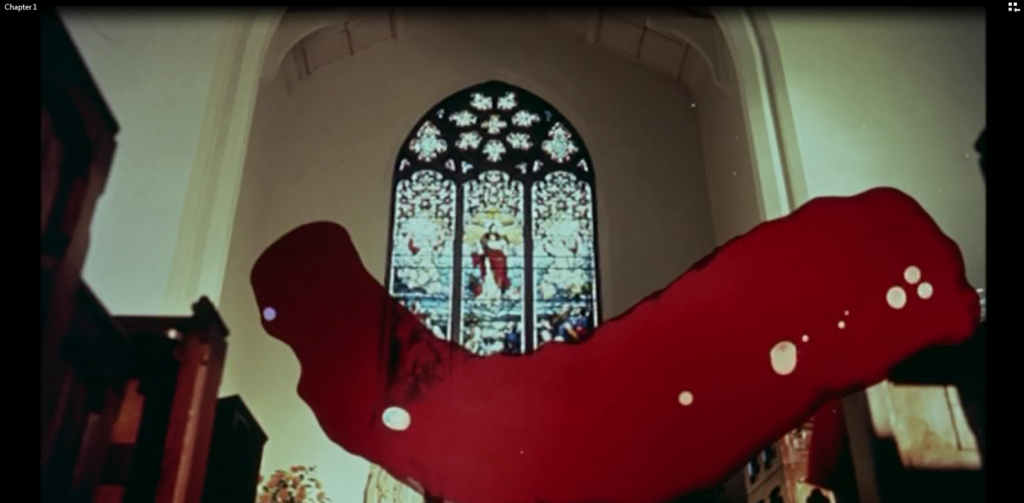
From the introduction onward, the colour red repeats probably as an abstract reminder of this first scene. It is in the colour of the scarf that John wears in Venice, the boots that Laura wears as she is trying to find John, the curtains in the church in Venice, the dots on the curtain in the hospital, the ball that the boy in the hospital is playing with, the red of the priests cap and walls of his chambers, the red candles in the priests room as he wakes in the night thinking something is wrong.
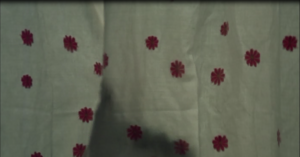
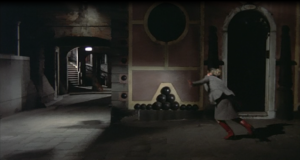
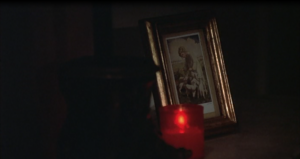
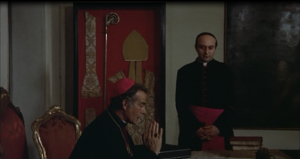
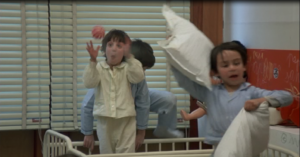
Of course, the most overt link between their daughter and the colour red, comes in the shape of another person running around Venice in an almost identical red coat. This person, who turns out to be the murderer, is the complete antithesis of their little girl.
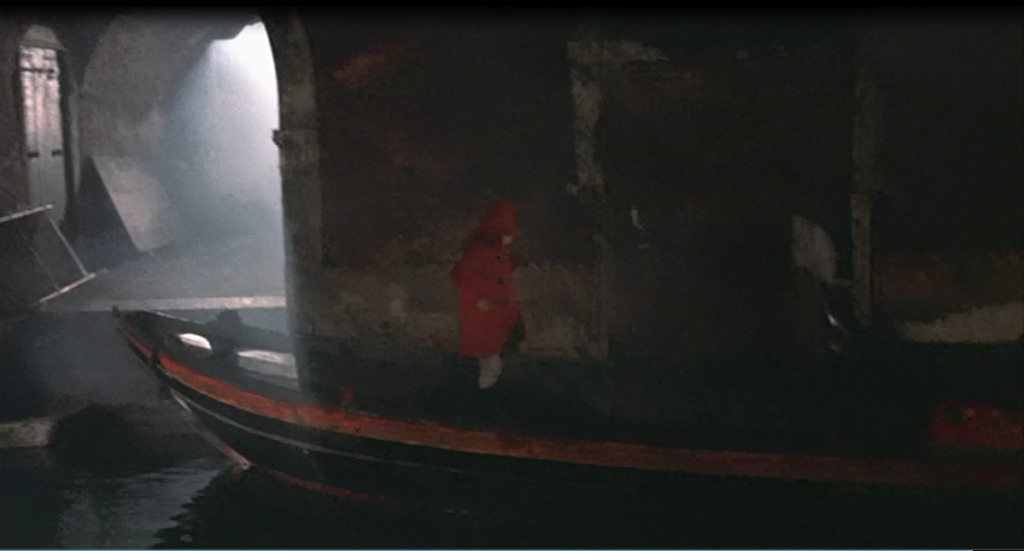
Another recurring theme throughout the movie is water. The daughter drowns in a pond, the parents leave their home to go to Venice in pouring rain, Laura and John go to Venice and with all its canals there is usually water in most exterior scenes.
One of my favourite scenes for building up suspense happens about half way through the movie where Laura has gone off back to the UK and John has gone to the church he is working on to meet with the priest about the mosaic that he is repairing. John decides to climb up the ladder and onto the cradle suspended high up, near the church ceiling, so that he can compare the new mosaic pieces with the ones already on the wall.
As John climbs up the ladder, it is dark. The backlight flares and very briefly, you see one of the old woman laughing in the flare. This is gives the viewer the creepy feeling that something is about to go wrong.
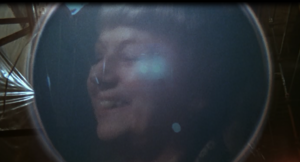
The next shot is taken high, looking almost directly down on John as he climbs – it is clear that he is very high up. The priest looks up at the ceiling and John – he is clearly concerned for John’s safety.
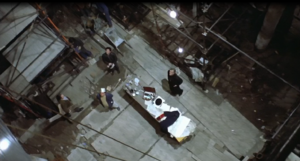
John steps onto the cradle and it creaks and sways. There is no other sound and the viewer is very conscious of these noises. It is dark up in the ceiling. There are a number of shots looking down at the people standing below – they are all looking up – worried. The cradle is not secure and sags on one side when John puts his weight on that side.
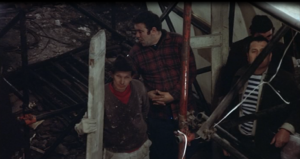
As John works on the wall, we see a beam split off from the roof, so as an audience we are aware before John that something is about to go wrong. The beam breaks off and goes crashing into John and collapsing the cradle. John just manages to hold onto a rope. The remaining part of the scene is an agonising attempt to get John to the safety of the scaffolding.
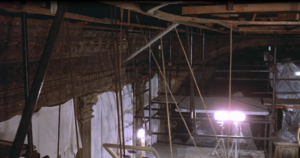
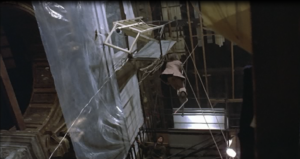
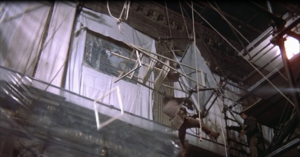
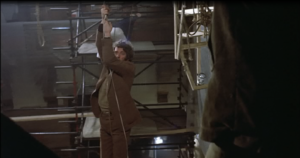
Don’t Look Now [feature film, DVD] Dir. Nicolas Hoeg.Casey Productions, Eldorado Films. UK, Italy. 1973. 110 min.
